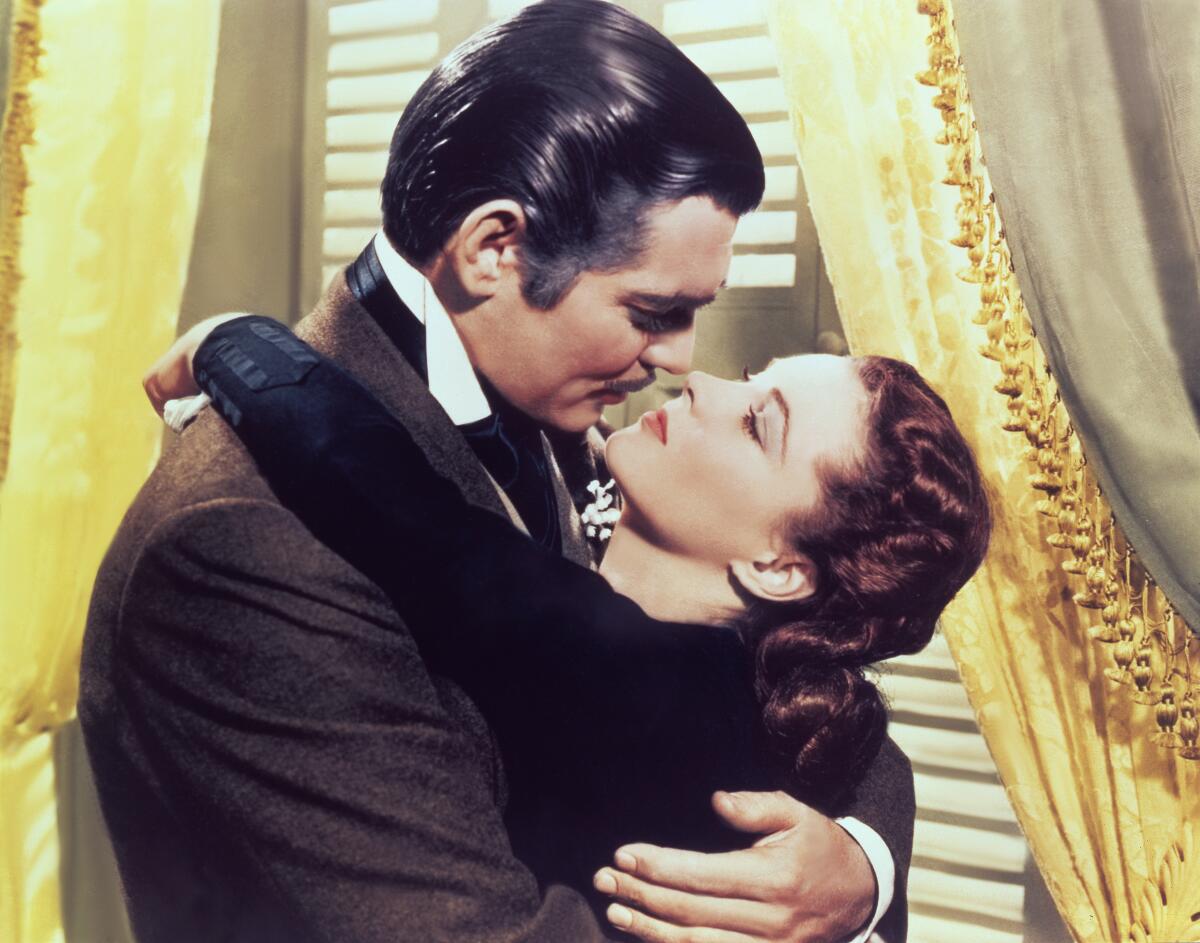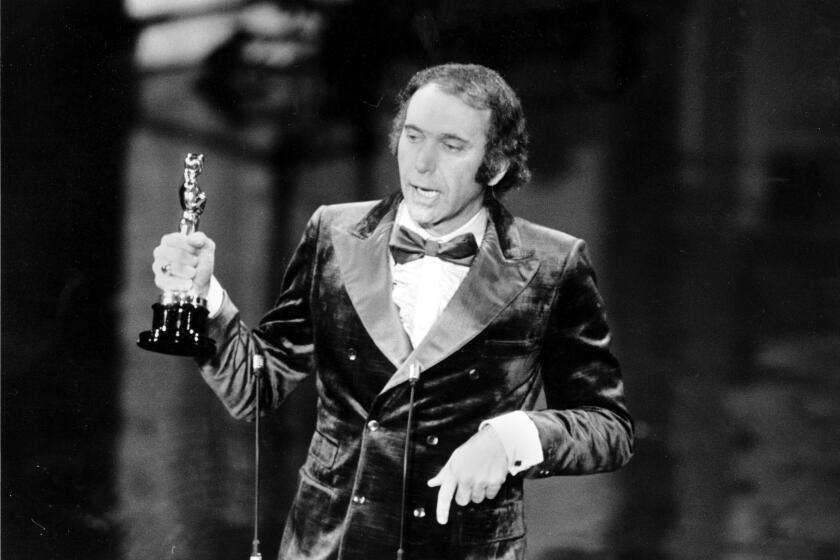From the Archives: ‘Gone With the Wind’ called masterful work of screen

It’s been seen, at last, and it will sweep in practically all the awards of the Academy of Motion Picture Arts and Sciences — “Gone With the Wind.”
At the moment, one can scarcely think of any statuette that will not be tendered — for production, masculine performance, feminine performance; perhaps the supporting portrayals, direction, writing, camera and art work.
The Selznick-International organization has scored a lasting triumph for the screen. The most difficult undertaking in many moons in the films has been brought to powerful and fascinating fruition, and shows a new way for re-creating the epical and lengthy story worthy of extended screen treatment.
ACCURATE TRANSFERENCE
Margaret Mitchell’s novel of the destruction of the Old South went to many hundreds of pages, yet all the essential features of that exceptional narrative have been put on celluloid with an accuracy that even in this day and age of the cinema is extraordinary.
Selznick has exhibited his loyalty before to original subjects in “David Copperfield” and “Tale of Two Cities,” but this is his supreme achievement in that respect, and a multitude of others.
MASTERLY EFFECT
Nothing that either his organization or M.G.M. might supply to make the ideal mise-en-scene is wanting. Granted many incidents have been telescoped in this nearly four-hour picture, and admitted also that there are some abrupt cuts and transitions, the effect of the entire enterprise is still masterly.
One may say, to be sure, that it would be better if certain continuities in the film were smoothed out, but then maybe that’s only for readers of the book who know the exact ratio of time in which certain events took place. This reviewer saw the film with one who had not read the Margaret Mitchell novel, and these things were less apparent to that appraiser.
“Gone With the Wind” is destined to appeal to both groups, the readers and those who haven’t read the book. Naturally there is a tremendous assemblage who know the subject from the printed page. A few dissenting votes may he heard on the ground of length of this picture, which is, needless to say, overwhelming.
CASTING CONQUEST
There are so many fine things to chronicle about the film that one cannot find the space in this preliminary estimate to touch on a 10th part of them. Characters are the most important thing. The casting, outcome of a super-search in each instance, is perfect with only one or two very slight exceptions.
Barbara O’Neil as Ellen O’Hara and Butterfly McQueen in certain phases of her impersonation of Prissy may be challenged.
Possibly Leslie Howard may not be some persons’ idea of Ashley, but he is the actor to carry almost any role.
For Vivien Leigh as Scarlett and Clark Gable as Rhett, discerning votes will be widely cast favorably. It is hard indeed to imagine two more exceptional selections. Gable is pluperfect and gives a brilliant performance.
There may be arguments about Miss Leigh, but putting her fitness and her ability to the acid test, she comes through with an amazing interpretation. It’s one of those performances that seems divinely inspired by the demands of the occasion. Almost equally well drawn is the Melanie of Olivia de Havilland, who succeeds in subduing and concealing her identity in this surprisingly real and sympathetic delineation.
Hattie McDaniel is the Greek chorus commenting on the action of the picture, representing more than anyone else the ideals of the South. It’s a scene-stealing effort.
MUCH FINE WORK
One can’t give credit to all but, naturally, Thomas Mitchell as Gerald O’Hara, Oscar Polk as Pork, Evelyn Keyes as Suellen O’Hara, Carroll Nye as Frank Kennedy, who practically begins a new career in this picture; Laura Hope Crews, Harry Davenport, Leona Roberts, Jane Darwell, Alicia Rhett, Rand Brooks, George Reeves, Fred Crane, and notably Ona Munson as Belle Watling are all superior in their work.
The picture was directed by Victor Fleming and screen-written by the late Sidney Howard. Others helped naturally, but from the screen credits one gleans that these two with David O. Selznick merit the primary credit.
“Gone With the Wind,” superbly photographed in color, is one of the great screen victories.
More to Read
Only good movies
Get the Indie Focus newsletter, Mark Olsen's weekly guide to the world of cinema.
You may occasionally receive promotional content from the Los Angeles Times.






